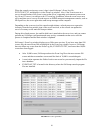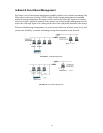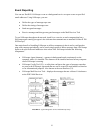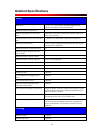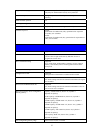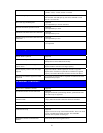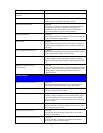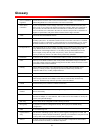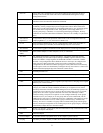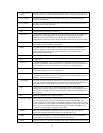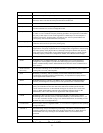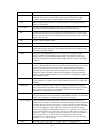
commission to complete a repair process.
N port A Fibre Channel port in a point-to-point or Fabric connection.
NVRAM Non-Volatile Random Access Memory. A memory unit equipped with a battery so that the
data stays intact even after the main power had been switched off.
out-of-band Refers to the connections and devices that are not in the data path.
parity Additional information stored along with the data that allows the controller to reconstruct
lost data on RAID 3 or 5 LUNs if a single drive fails.
parity check A process whereby the integrity of the redundant data on fault tolerant arrays (RAID 1, 3,
5, and 6 or 1+0) is checked. The parity checking procedure on a logical drive recalculates
the parity of data stripes in each of the logical drive's RAID stripe sets and compares it
with the stored parity. If a discrepancy is found, an error will be reported and the new
correct parity will be substituted for the stored parity.
partner group A pair of interconnected controller units. Expansion units interconnected to the pair of
controller units can also be part of the partner group.
physical array A physical array is a group of physical drives in SANscape that participate in one or more
logical drives. If a group of physical drives is configured into a logical drive without using
the entire capacity of the physical drives, SANscape will require that the same physical
array of drives be used together in any remaining logical drives that are created with the
remaining capacity. In the New Configuration window, the Add Disk button changes
PID Primary controller identifier number
RAID Redundant Array of Independent Disks. An arrangement of two or more disk drives
configured to work together to provide more disk storage space, better performance,
and/or redundant backup of data. Defined RAID levels describe various combinations of
these features.
RAID controller
drive array
An enclosure containing one or two RAID controllers, a group of drives, power supplies,
cooling fans, I/O cards, and mid-planes.
RAS Reliability, availability, and serviceability. Features that enhance these attributes,
including hot-pluggable capability and redundancy, are important for keeping mission-
critical applications and data on-line.
RDAC Redundant disk array controller. The RDAC driver is included in the RAID Manager
software, and manages the rerouting of active I/O operations when a controller fails.
read policy Descriptions of the read policies are as follows: When you indicate a No Cache read
policy, the controller will not store data in the read cache. Normal specifies that the
current controller does not use Read ahead caching for the current drive. Set the read
policy to Read Ahead and the controller will read multiple adjacent blocks of data
automatically. This is most effective for applications with sequential reads.
rebuild Rebuilding a disk is the process of reconstructing the data on a disk before it failed.
Rebuilding can be done only in arrays with data redundancy, such as RAID levels 1, 3, 5
or 1+0. See "automatic rebuild" on page -3 for detailed information on rebuilding. For the
Rebuild rate, refer to "background rate."
reconstruction Process used to restore a degraded RAID 1, 3, or 5 LUN to its original state after replacing
a single failed drive.
S.M.A.R.T. Self-Monitoring Analysis and Reporting Technology. The industry standard reliability
prediction indicator for both the IDE/ATA and SCSI hard disk drives. Hard disk drives
with SMART offer early warning of some hard disk failures so critical data can be
protected.
SAF-TE SCSI Accessed Fault-Tolerant Enclosures.
SAN Storage Area Networking. A high-speed, open-standard scalable network of storage
di d idi l tddt
33



